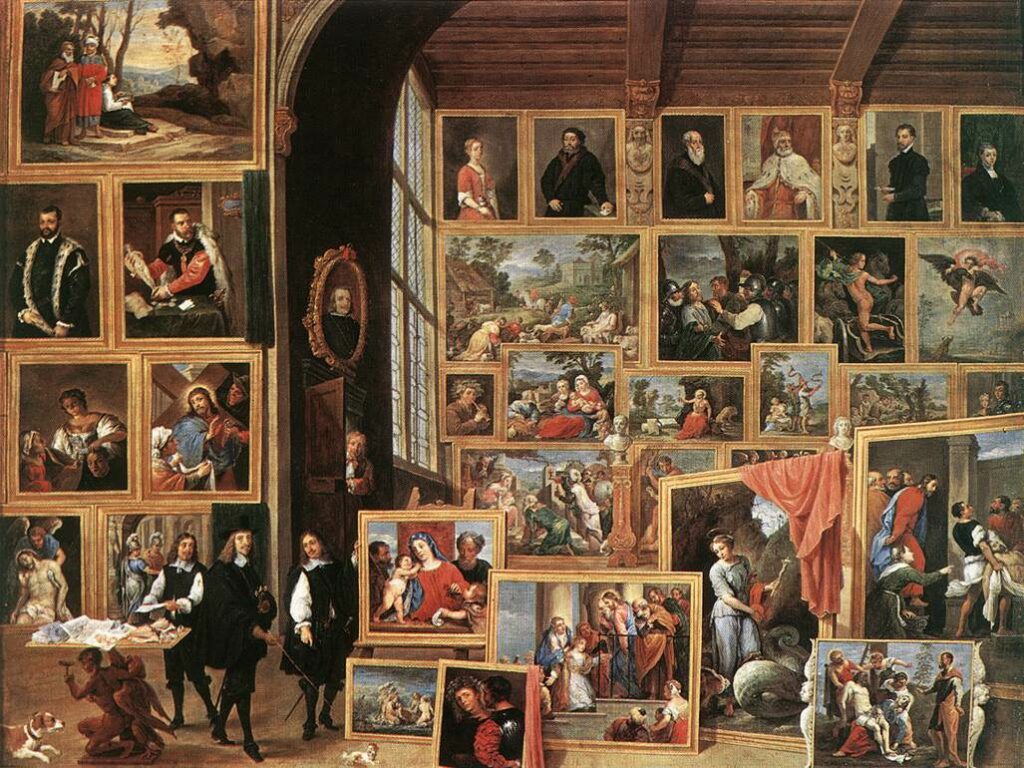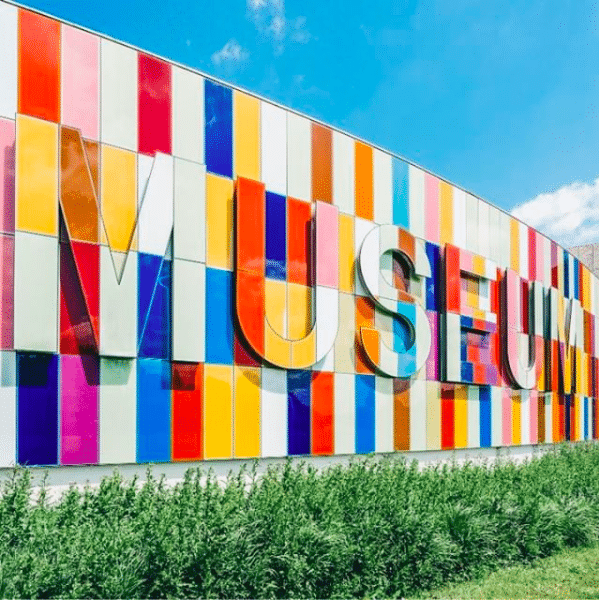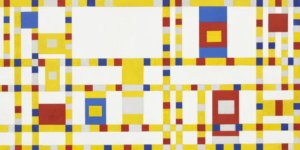Picture an art museum—you’re probably thinking of a huge building with either a classical facade or a super-modern edifice with lots of windows and unusual angles. The art inside of it is probably divided into sections by time period and geography. And it probably has a room or two for temporary exhibits. For a lot of us, that’s just what an art museum is. However, art museums haven’t always been that way—and they’re still changing today.
The Rise of the Art Museum
Throughout most of modernity, collections of art and other objects were limited to the top stratum of society and religious institutions. Emperors, kings, princes, and nobles patronized artists and collected art in their homes. Religious institutions folded art into the design of temples, monasteries, shrines, and churches. These collections were a sign of prestige and social status, but they were largely private (except insofar as the public had access to the relevant religious institutions).
Of course, that’s not to say that people weren’t collecting meaningful and beautiful objects until modern times. Collections of antiquities, religious objects and curiosities have been found at burial sites and tombs dating back thousands of years. It’s just that these types of collections weren’t typically made available to the public—a key feature of a museum as we think of it today.
The first modern museum was the Ashmolean, built by the University of Oxford. Elias Ashmole donated his private collection to the university, which then erected a building to house it and opened it to the public in 1683. The original collection was largely focused on portraiture, but expanded over the years to include relics of natural history and other cultural curios. The original donation was conditional upon the university building a structure to store and display Ashmole’s collection—he wanted it to be available to the public for study. Over the next several hundred years, more private collections made their way into the public domain and the modern museum emerged.

From Private to Public To Private-ish
“Museum” comes from the Greek mouseion – “seat of the Muses.” The early museums weren’t museums in the way that we think of them at all. Instead, they were forae for philosophical study and contemplation. Over the years, the word started to take on the connotation of a collection. Eventually, it started to take on the connotation of a public collection. Now, the word is changing again.
Most of us think of museums as public institutions, although, as previously mentioned, that has only been the case for a few hundred years. Wealthy individuals and people with a passion for art have continued to amass private collections, but we don’t think of them as “museums.” Over the past decade, however, that line has started to blur.
A recent report found that private contemporary art museums are on the rise. These are privately-owned institutions housing private collections, but they’re open to the public (sometimes through regular hours, sometimes by appointment only). Of the more than 300 museums included in the report, more than half are less than 15 years old. Almost 1 in 5 are less than 5 years old. They’re spread all over the world, with South Korea taking the top spot (43 private museums), followed by the US (42) and Germany (42). Almost all are owned by men, and almost all of those men are over the age of 60.

So what’s behind the rise of the private art museum? Some have speculated that the motive for opening a private museum is mostly financial. High net worth individuals, the argument goes, collect art as an asset and need a way to store it and display it. Opening a private museum meets that need and also provides several additional benefits: First, there’s the cultural and social prestige associated with art collection, especially when that collection merits its own museum. Second, a private art museum can double as a tax shelter—the Senate Finance Committee has expressed particular concern on that front.
That explanation is certainly possible, but cultural cachet and tax incentives aren’t the only reasons a collector might want to open a private art museum. They may simply want to give public access to the art they love without turning their collection over to a museum. Donating or selling to a public museum would mean losing the coherence of the collection as individual pieces are split up to fit into the museum’s existing organization. Opening a private museum allows the owner to keep the whole collection together and display it however they feel is best. Collecting art is an act of love and an expression of personal taste—a private museum is a way to preserve the collection as a whole but still share it with the world.
In that sense, public and private art museums aren’t opposed to each other—they’re actually complementary. Large public institutions can house huge collections, organized with education in mind, while private museums can display art chosen and organized simply for the love of it.
At the end of the day, the rise of private art museums means that more art is available to the public—and it’s pretty tough to argue against that.
Private Art Museums, Public Art Museums, And The Digital Revolution
Of course, private art museums aren’t the only big change that’s afoot. More and more art collections, both public and private, are going online. This has a number of benefits—archiving and recordkeeping, preservation in case something happens to the original, and opening access to anyone with an Internet connection. Scholars can study pieces of art housed in museums and collections on the other side of the globe. Students can visit the best museums and collections in the world without ever leaving their desks. Anyone who loves art can open their own private museum online and share their collection with the world.
We believe that art is for everyone. We believe that artists, gallerists, collectors, students, and enthusiasts are better off if they’re connected to each other so they can share ideas, inspiration, feedback, and support. Art is for the community—that’s what ARTDEX is all about.


![[Left] Kusama with her piece Dots Obsession, 2012, via AWARE, [Right] Yayoi Kusama (Courtesy Whitney Museum of American Art) | Source: thecollector.com](https://www.artdex.com/wp-content/uploads/2024/04/Left-Kusama-with-her-piece-Dots-Obsession-2012-via-AWARE-Right-Yayoi-Kusama-Courtesy-Whitney-Museum-of-American-Art-Source-thecollector.com--300x172.png)




